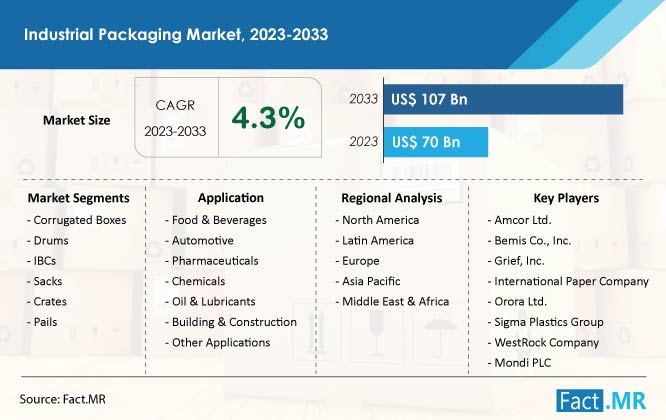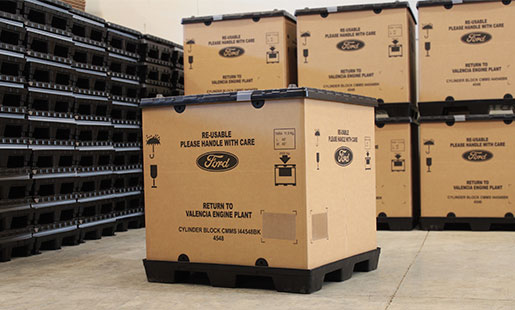Processing Company Prowess: Opening Efficiency in Production
Wiki Article
Reliable Industrial Recycling Solutions for Sustainable Product Packaging: A Comprehensive Guide
That's where this extensive guide on efficient industrial recycling options for lasting packaging comes in. By checking out key areas such as packaging product option, developing for recyclability, executing reusing facilities, teaming up with reusing companions, and monitoring and measuring reusing success, this guide will equip you with the knowledge and devices required to make educated choices and drive positive modification within your company. Whether you're a product packaging professional, sustainability manager, or merely interested in the topic, this guide will certainly offer valuable insights and strategies to assist you browse the globe of sustainable product packaging.Packaging Product Choice
The selection of product packaging materials plays an essential duty in guaranteeing the sustainability of industrial recycling services. The option of materials is key in minimizing environmental impact and maximizing reusing efficiency when it comes to lasting product packaging. Selecting the ideal products can help in reducing waste generation, conserve resources, and advertise a round economy.One essential variable to take into consideration in packaging material option is recyclability - plastic container manufacturer. Products that can be quickly reused and incorporated back right into the manufacturing cycle are liked. For instance, products like cardboard, paper, glass, and certain sorts of plastics can be reused several times without losing their top quality. On the various other hand, products that are tough to reuse, such as blended plastics or non-recyclable composites, can develop challenges for the reusing procedure and may finish up in incinerators or land fills.
An additional factor to consider is using eco-friendly and eco-friendly materials. Packaging made from renewable sources, such as plant-based plastics or biopolymers, can help decrease reliance on nonrenewable fuel sources and minimize environment adjustment. Additionally, naturally degradable materials damage down naturally in time, decreasing the build-up of waste in land fills.
Furthermore, the weight and volume of packaging materials should be minimized to decrease transportation prices and power usage. Light-weight products not only require fewer sources throughout manufacturing yet additionally add to lower carbon exhausts throughout transport.
Creating for Recyclability
In order to ensure the recyclability of packaging materials, thoughtful layout is essential. Designing for recyclability involves creating packaging that can be quickly arranged, divided, and refined in reusing centers. One essential element of making for recyclability is the selection of products. Packaging designers ought to focus on the usage of materials that are widely accepted for recycling and have actually developed reusing facilities. Materials such as glass, aluminum, and certain kinds of plastic, like pet dog and HDPE, are generally recycled and ought to be preferred over materials that are challenging or costly to reuse.Another important consideration in making for recyclability is the elimination of unneeded elements or materials. By minimizing the variety of layers, coverings, and additional elements, packaging can be made less complex and much easier to recycle. Furthermore, designers must aim to reduce making use of mixed materials, as they can make complex the recycling procedure.

Implementing Recycling Facilities
Efficient implementation of reusing infrastructure is vital for the success of industrial recycling remedies. Without appropriate framework in place, the reusing procedure comes to be inefficient and inadequate, impeding the general goal of sustainable packaging.To carry out reusing infrastructure efficiently, numerous key aspects require to be considered. There need to be a well-organized collection system that assists in the separation and collection of recyclable materials. This can include assigned recycling containers in public rooms, as well as partnerships with waste administration business for curbside pick-up and sorting.
As soon as accumulated, the recyclable materials need to be moved to recycling centers in a prompt fashion. This requires effective logistics and transportation networks, making sure that the materials reach the suitable industrial packaging solutions facilities without delay.
At the recycling centers, advanced sorting and processing technologies must remain in location to separate different types of materials efficiently. This includes making use of automated sorting machines, optical scanners, and manual sorting methods.
Moreover, there must be a robust market demand for recycled products. This can be attained with collaborations with producers and industries that use recycled products in their manufacturing processes. Producing a steady market for recycled materials incentivizes the reusing market and promotes the round economy.
Collaborating With Recycling Allies

One secret element of teaming up with reusing partners is the facility of clear interaction networks. It is necessary to establish open lines of interaction to promote the exchange of info, updates, and comments. This allows both celebrations to stay informed regarding the progress of recycling initiatives and address any kind of difficulties or issues that may develop.
Furthermore, cooperation can entail collaborations in making and carrying out reusing programs. Recycling companions can offer important insights and support in creating efficient collection systems and establishing one of the most suitable recycling technologies. By interacting, services and reusing companions can enhance the recycling procedure and reduce waste.
Moreover, cooperation can expand beyond the functional aspects of reusing. It can likewise incorporate advocacy and education campaigns. By joining pressures, businesses and reusing companions can elevate recognition concerning the relevance of reusing and promote the fostering of sustainable packaging techniques amongst consumers and various other stakeholders.
Tracking and Measuring Recycling Success
To ensure the effectiveness of industrial recycling options and the accomplishment of sustainable product packaging objectives, it is critical for services and their recycling partners to develop a detailed system for monitoring and gauging reusing success (processing company). Measuring and tracking recycling success allows businesses to analyze the effect of their recycling efforts, recognize locations for renovation, and established significant targets for future developmentOne way to track recycling success is with the usage of information collection and analysis tools. By accumulating data on the amount of product packaging waste produced, the portion of waste that is recycled, and the sorts of materials being recycled, services can gain valuable understandings right into their reusing efficiency. This data can then be assessed to determine patterns, patterns, and areas of inefficiency.
Another crucial facet of tracking and gauging recycling success is establishing standard and clear metrics. This enables organizations to contrast their performance against sector benchmarks and track their progress over time. Metrics such as reusing rates, waste diversion prices, and greenhouse gas exhausts can offer a quantitative action of an organization's recycling success.

Conclusion
In conclusion, implementing reliable industrial recycling solutions for lasting packaging calls for careful factor to consider of packaging material option, creating for recyclability, executing reusing facilities, collaborating with reusing partners, and monitoring and measuring reusing success. By including these methods, businesses can add to a more lasting and environmentally-friendly method to packaging, minimizing waste and promoting the round economic situation.By checking out essential areas such as product packaging product selection, developing for recyclability, implementing recycling framework, collaborating with reusing companions, and tracking and gauging recycling success, this guide will certainly outfit you with the knowledge and devices necessary to make educated choices and drive favorable change within your organization. Product packaging developers need to prioritize the use of products that are extensively accepted for recycling and have developed reusing frameworks.Collaboration with reusing companions is important for the effective execution of industrial reusing options and the success of sustainable product packaging objectives. By joining pressures, companies and reusing companions can raise awareness concerning the significance of recycling and promote the fostering of lasting product packaging methods among customers and various other stakeholders.
By accumulating information on the quantity of product packaging waste created, the percentage of waste that is reused, and the types of products being reused, businesses can acquire important insights into their recycling performance.
Report this wiki page